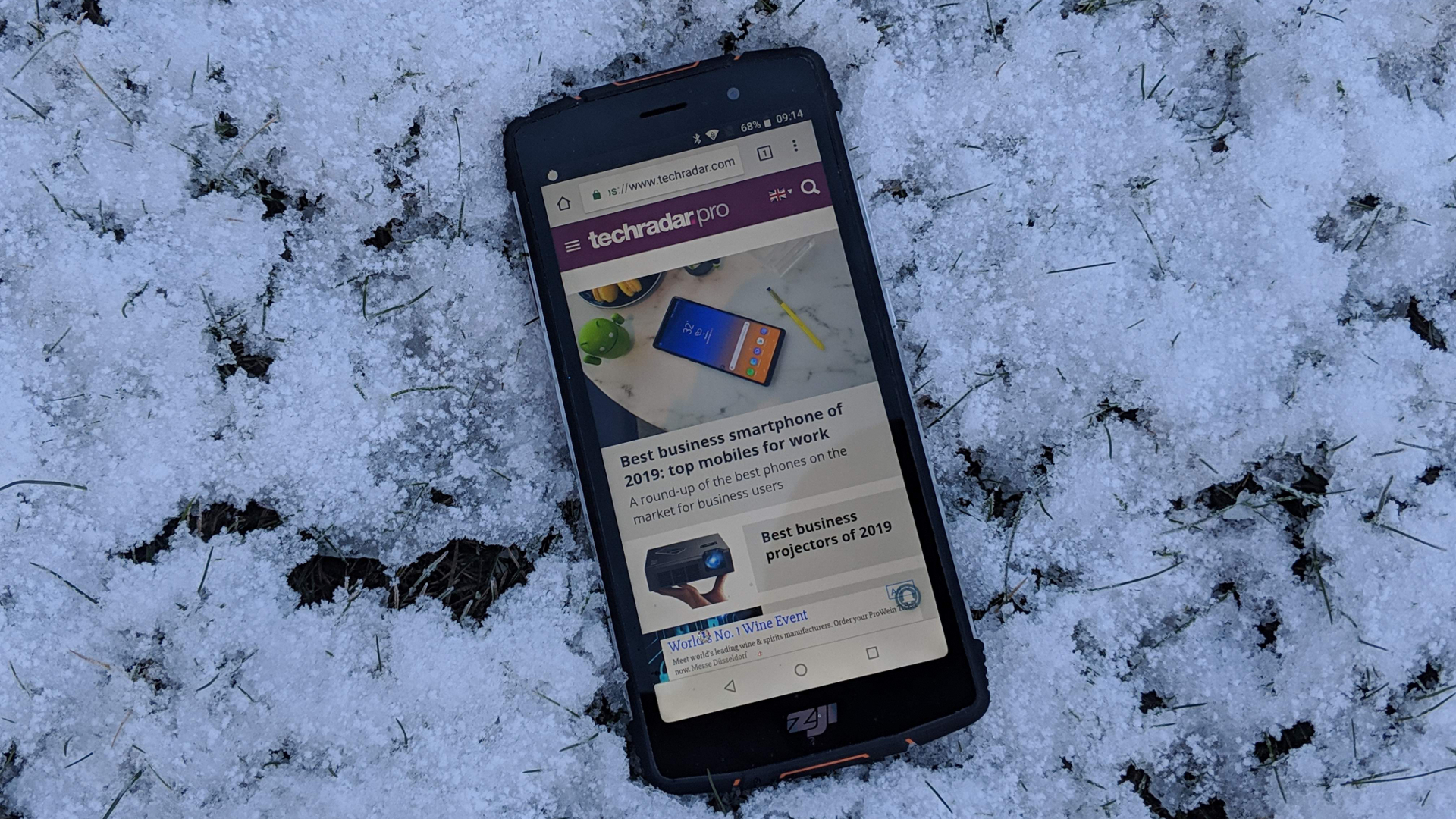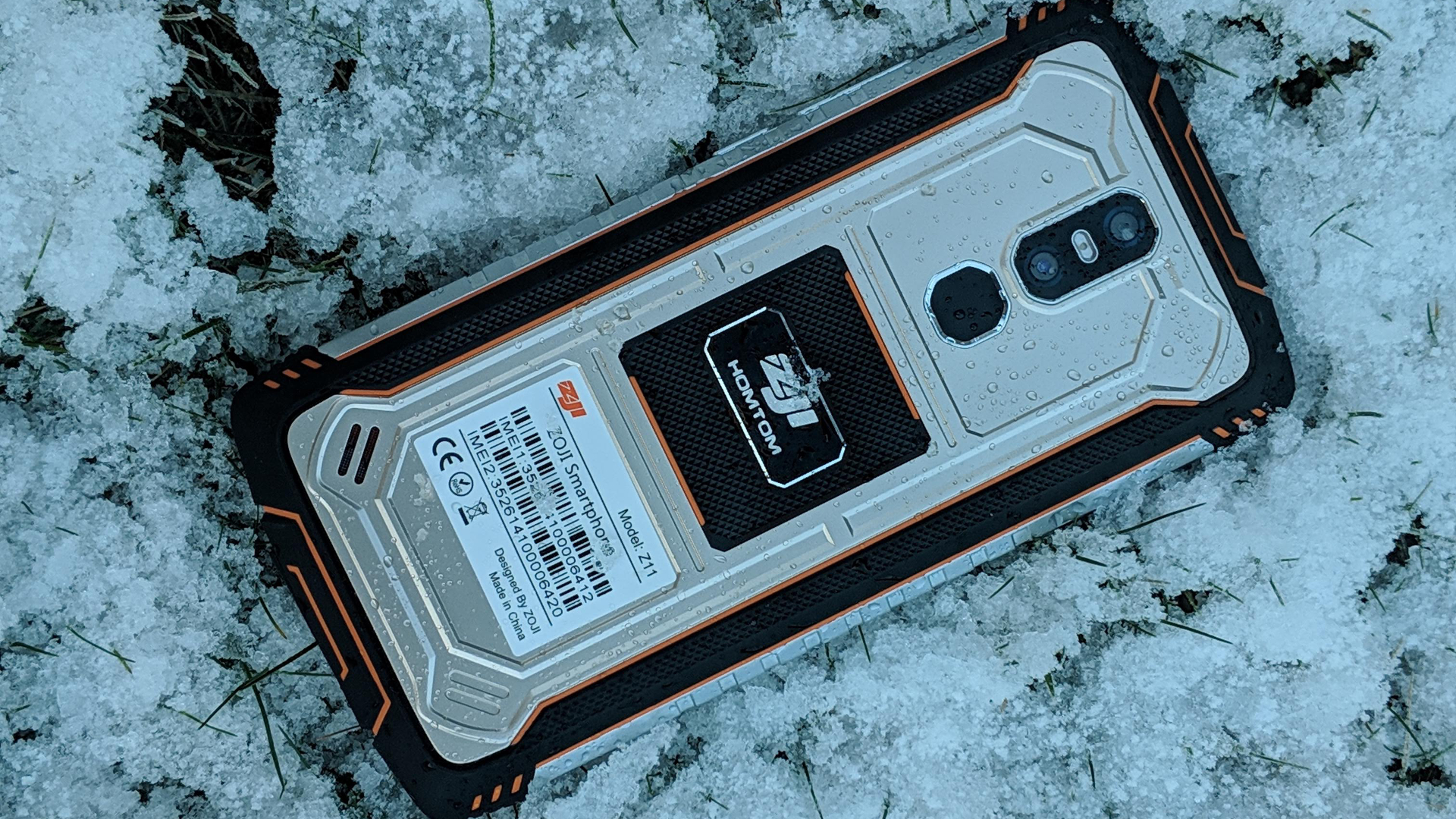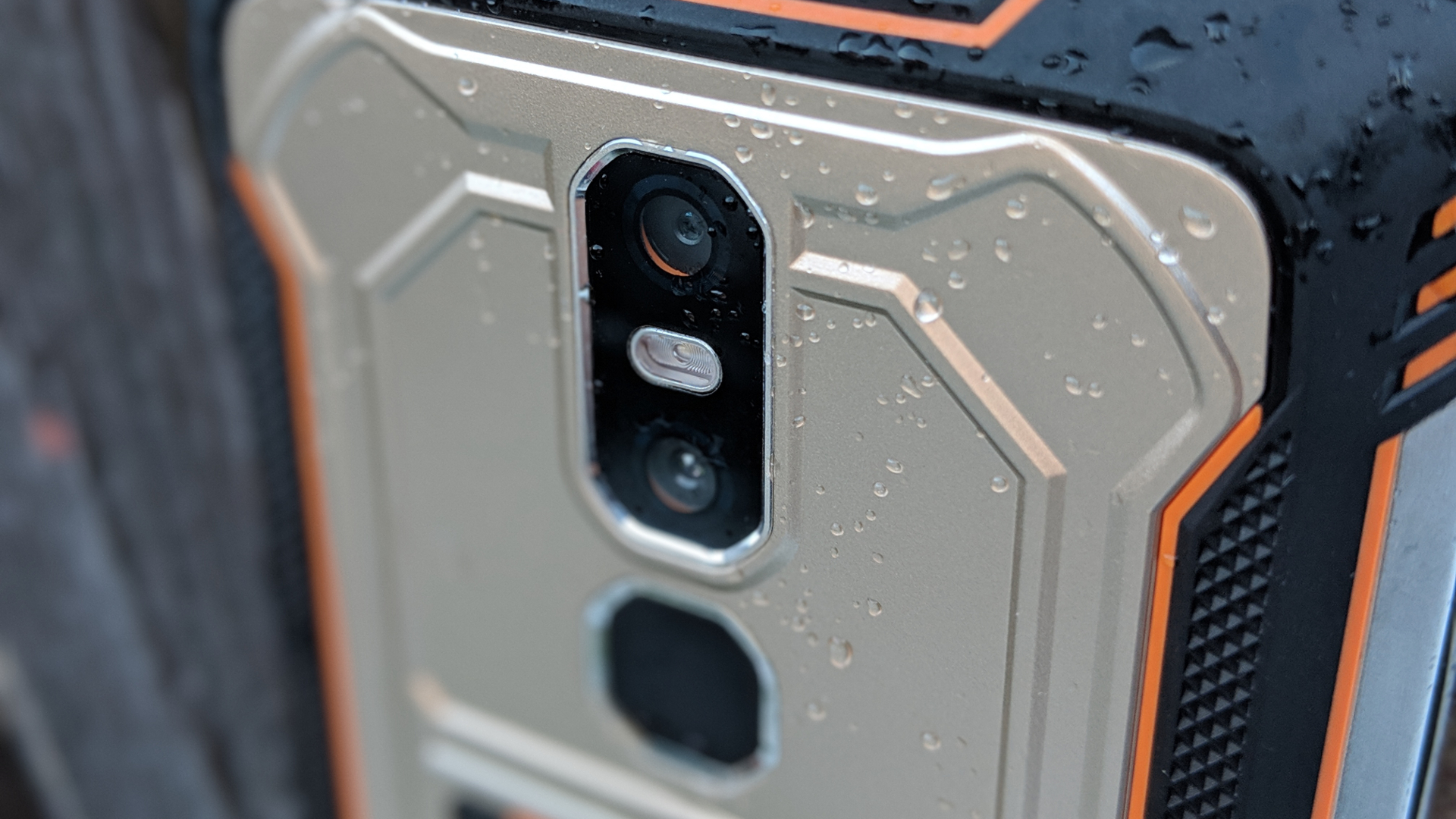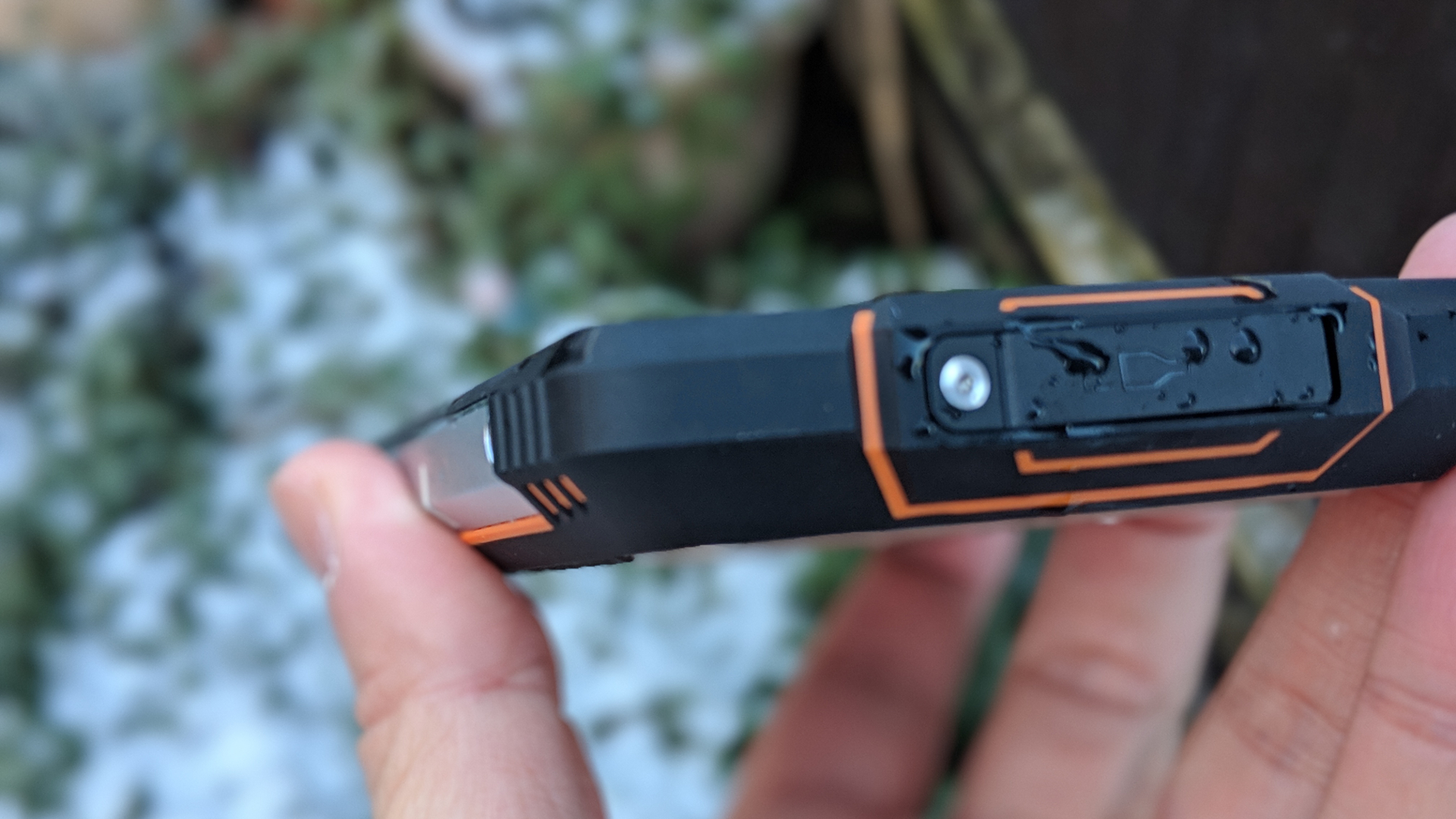TechRadar Verdict
The Homtom Zoji Z11 is a rugged smartphone that means business. It packs an incredible 10,000mAh battery with some good components and runs a fairly recent version of Android. It’s just a shame there are some drawbacks here, such as a lower resolution screen and the lack of a status light.
Pros
- +
Temptingly priced
- +
10Ah battery
- +
Face unlock
- +
Stock Android
Cons
- -
Average performance
- -
Low screen resolution
- -
No dedicated button (camera or otherwise)
- -
No 802.11ac Wi-Fi or NFC
Why you can trust TechRadar
This is a smartphone that will turn heads not because it is the fastest or the thinnest in its class. No, the Homtom Zoji Z11 (not to be confused with the Nubia Z11) will receive envious glances because it has a massive 10,000mAh battery.
Homtom sent us the sample and Aliexpress sells the Zoji Z11 for as little as $200 at the time of writing. Note that, while this price includes delivery, it is exclusive of any taxes that may be levied by HMRC or the courier companies on behalf of the vendor. Want to buy tech from online Chinese retailers? Read this first.
It joins the ranks of the 16,000mAh monster that is the Energizer Power Max P16K Pro, the Ulefone Power 5 with its 13,000mAh battery, the 11,000mAh Blackview P10000 Pro and the Oukitel K10000 or the WP2 (both with a 10,000mAh cell). Bear in mind, though, that bigger battery capacity doesn’t necessarily translate into better battery life.
We’ve come across HomTom twice before when we reviewed the HT20, a budget rugged smartphone from 2017, and the Z9, a more recent model with Android 8.1.
Design
This is one of the heaviest and largest rugged smartphones that we have ever tested. At 175 x 84 x 17mm with a weight of 355g, it is heavier and bigger than even the Doogee S90 smartphone we recently reviewed. Blame this on the massive battery that occupies a big portion of the phone’s internal space, as well as the metal frame that gives it an industrial finish and also earns this handset an IP68 rating.

Available in bright orange, bright yellow and vivid green color schemes, the Z11 fits your typical rugged smartphone template with plenty of rubber and flaps (one flap covers the USB Type-C connector, and the other protects the SIM tray).

There’s no status LED or headphone socket, and other than the volume rocker and the power button, there’s nothing else – no dedicated SOS, PTT (press-to-talk) or camera buttons. Which is a bit of a shame and a lost opportunity to catch up on the competition.

There’s a front-facing camera and two rear-facing sensors plus a flash located just above the fingerprint sensor. There’s a lone speaker at the back and a label with the Homtom Zoji name written on it.

CPU: Mediatek MT6750T octa-core
GPU: Mali-T860MP2
RAM: 4GB
Storage: 64GB
Screen size: 5.99-inch
Resolution: 1,440 x 720
Weight: 355g
Dimensions: 175 x 84 x 17mm
Rear camera: 16+2MP
Front camera: 13MP
OS: Android 8.1
Battery: 10Ah
Specifications
Homtom focused on the battery, and it is likely that this took the biggest chunk of the bill of materials (the actual cost of the hardware). The rest of the configuration is therefore rather average: an 8-core Mediatek system-on-a-chip, 4GB RAM, 64GB storage, along with a 6-inch display covered with Gorilla Glass 3 (and an oleophobic finish) that has a resolution of 1440 x 720 pixels. You also get dual SIM standby with a microSD option.
We understand the choice of a screen with a lower resolution. Opting for an HD+ rather than an FHD+ display not only saves on the component cost, but also improves battery life and graphics performance due to the lower number of pixels.
The device manufacturer opted to equip its cameras with Sony sensors, but foolishly decided to give up on 802.11ac Wi-Fi connectivity for the sake of a few dollars. A 24W (9V,2.7A) fast charger is also bundled and you will be able to use the smartphone as an emergency power bank if required.
Performance and usage
The Z11 performed on average better than the P9000 Max from Poptel which has the same hardware configuration, but a higher resolution display which taxes both the battery life and the GPU – both having to work harder with more pixels to drive. However, the substorage system, as measured on Androbench, returned one of the worst results we’ve seen to date.

Here’s how the Homtom Zoji Z11 performed in our suite of benchmark tests:
Geekbench: 681 (single-core); 2,760 (multi-core); 1,984 (compute)
PCMark (Work 2.0): 3,982
Passmark: 3,333
Passmark CPU: 74,510
Androbench (sequential): 256 (sequential read); 102 (sequential write)
Androbench (random): 13 (random read); 12 (random write)
3DMark Slingshot: 172
3DMark Slingshot Extreme: 124
3DMark IceStorm: 9,741
HWBot Prime: 3,670
A few notes: the face unlock feature worked well and the Z11 runs what looks like a stock Android 8.1 Oreo. As with other rugged smartphones we’ve looked at previously, the Z11 includes a toolbox with a bunch of free apps that are designed to be useful for a handy person or DIY fan (like a protractor). Speaking of handy, there’s a shortcut that allows you to jump straight into extreme power saving mode should you need it.
Otherwise, we can only applaud Homtom’s decision to keep the Z11 as bloatware-free as possible.
The competition
The Z11 is a rare beast in the busy smartphone landscape. It is one of two rugged smartphones with such a massive battery capacity. At $200, it is a solid candidate for anyone seeking an entry-level smartphone with a mammoth battery. It beats the Poptel P9000 Max easily where it counts: the Z11 has a bigger battery, it is cheaper, has a newer OS, face unlock, and better front and rear cameras. Poptel’s smartphone has an LED flashlight, a higher screen resolution and dedicated buttons.
Things are slightly different with the Oukitel WP2. This is another 10Ah rugged smartphone which has a higher screen resolution, NFC, along with an LED flashlight at the back, but carries a 10% premium. All in all, it’s likely to be a better choice.

Final verdict
The Homtom Zoji Z11 looks good, packs a great battery capacity, and it’s affordable at just under $200. There is much to like about the Z11, but you must bear in mind its shortcomings. Namely, the average CPU and GPU, lack of dedicated buttons, and the fact that it has no 802.11ac Wi-Fi, no LED status lights and no earphone socket.
There’s little competition out there, but the few devices that sport a 9Ah or 10Ah battery are capable alternatives with better features.
- We’ve picked out the best rugged smartphones

Désiré has been musing and writing about technology during a career spanning four decades. He dabbled in website builders and web hosting when DHTML and frames were in vogue and started narrating about the impact of technology on society just before the start of the Y2K hysteria at the turn of the last millennium.
